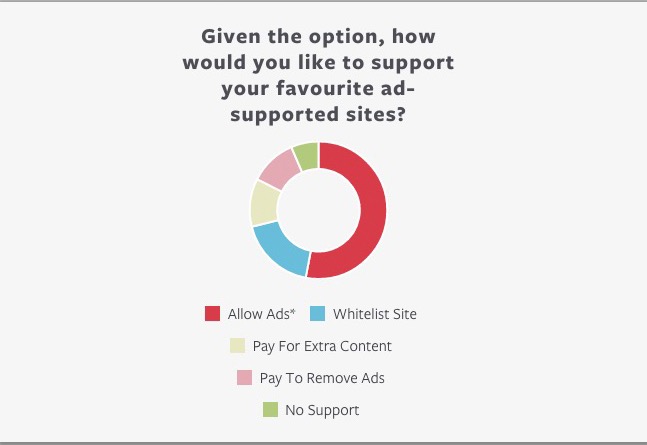
Those on edge about the increasing popularity of ad blocking found a lot to worry about over the past few months.
The sharp rise in ad blocking adoption and Apple’s entry into the space are clear indications that the ad blocking problem hasn’t gone away and will only grow with time. But while the press and industry frenzy has unearthed some real concerns, it has also created — or failed to address — some big misconceptions about the technology.
Myth: Ad blocking doesn’t affect native ads
Publishers looking for refuge from the ad blocking maelstrom have turned to native advertising for refuge. But while native ads aren’t ad blocking’s primary target, they’re far from immune to it. Running an ad blocker on BuzzFeed’s homepage, for example, strips the page of its “promoted by” placements, which are replaced by regular posts. That’s because many publishers, including BuzzFeed, serve their native ads through traditional ad servers or even native ad platforms such as Nativo or Triplelift, which ad blockers are programmed to block.

Myth: Ad blocking only affects gaming and tech sites
Gaming and tech sites have traditionally been hardest hit by ad blockers, thanks to their audiences of young male techies. Gaming site Destructoid said in 2013 that half its readers blocked its ads. It resorted to pleading with readers to do the right thing. These days, the picture is changing. While the typical gaming site sees ad blocking rates as high as 55 percent, entertainment (29 percent) and fashion (26 percent) sites are feeling the burn as well, according to Secret Media, which sells anti-ad blocker tech to publishers.
Myth: Ad blocker users hate all ads
Ad blocking’s rise indicates that many people are ticked off about the state of digital advertising. But that doesn’t mean that they hate advertising overall. Crystal, one the most popular of the early iOS ad blockers found that half of its users said that they would be willing to view ads that weren’t too distracting, resource-heavy or data-intensive. Adblock Plus saw similar results when it polled its own users, 70 percent of which said that they were OK with ads that meet its “Acceptable Ads” criteria.
“A fair few publishers believe that people that use ad blockers don’t want to see any advertising. Well, we know that’s just not true,” said Tom Yeomans, CEO of Yavli, which offers technology to subvert ad blockers.

Myth: Ad blockers only block intrusive ads
Ad blockers, being blunt instruments, by default treat every ad the same, no matter how intrusive it is. AdBlock Plus’ Acceptable Ads program attempts to fix this by letting white-listed ads through, but most ad blockers lack that nuance. Ad blockers work off crowdsourced blacklists such as EasyList, which are populated by URLs and other page elements associated with advertising. Often, this means that even the least obtrusive ads, such as those from lo-fi ad network The Deck, get caught in the crossfire. “We’re definitely paying for everyone else’s sins,” The Deck founder Jim Coudal told Digiday in September.
More in Media

Digiday+ Research: Publishers take their focus off events as revenue dips
The percentage of publishers making money from events hit a low as of the first quarter of this year and, as a result, fewer publishers plan on putting a focus on growing that part of their business.

What platforms, brands and agencies hope to get out of the Possible conference in year 2
Year two of Possible is once again being held in Miami Beach, and it will take place from April 15-17 with 3,000 attendees expected to listen to another 200 or so speakers, including Snap’s Colleen DeCourcy, Uber Ads’ Megan Ramm and UM Worldwide’s Matthew Smith.

AI Briefing: Cloud giants’ AI ambitions create new partnerships — and new competitive concerns
Last week, tech companies like Google, Microsoft and Amazon all announced updates more updates for their cloud and AI efforts






